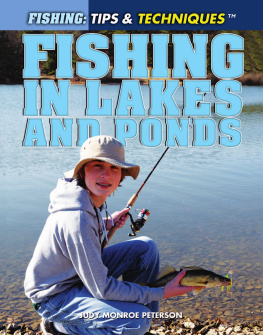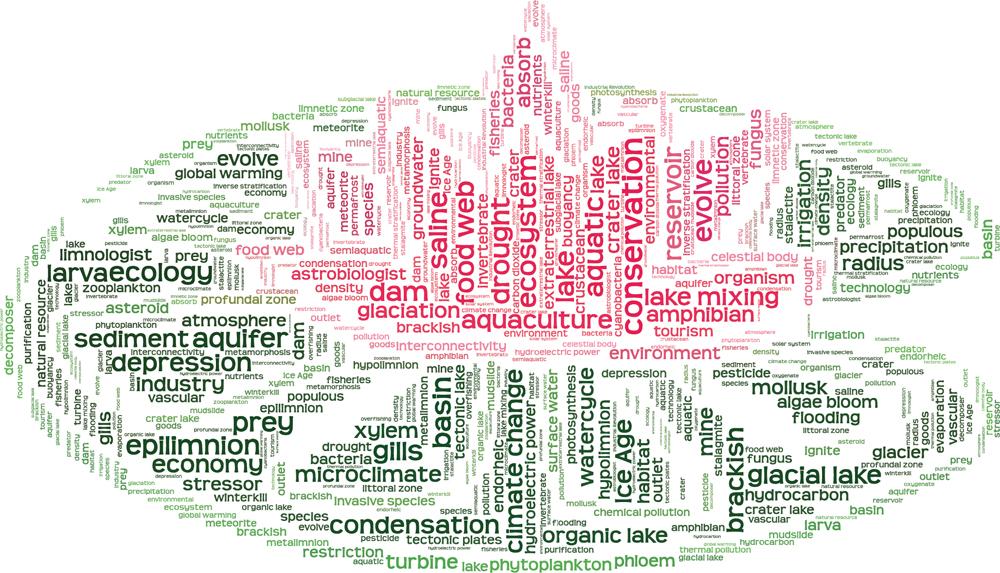Johannah Haney - Lakes and Ponds!: With 25 Science Projects for Kids
Here you can read online Johannah Haney - Lakes and Ponds!: With 25 Science Projects for Kids full text of the book (entire story) in english for free. Download pdf and epub, get meaning, cover and reviews about this ebook. year: 2018, publisher: Nomad Press, genre: Children. Description of the work, (preface) as well as reviews are available. Best literature library LitArk.com created for fans of good reading and offers a wide selection of genres:
Romance novel
Science fiction
Adventure
Detective
Science
History
Home and family
Prose
Art
Politics
Computer
Non-fiction
Religion
Business
Children
Humor
Choose a favorite category and find really read worthwhile books. Enjoy immersion in the world of imagination, feel the emotions of the characters or learn something new for yourself, make an fascinating discovery.
- Book:Lakes and Ponds!: With 25 Science Projects for Kids
- Author:
- Publisher:Nomad Press
- Genre:
- Year:2018
- Rating:5 / 5
- Favourites:Add to favourites
- Your mark:
Lakes and Ponds!: With 25 Science Projects for Kids: summary, description and annotation
We offer to read an annotation, description, summary or preface (depends on what the author of the book "Lakes and Ponds!: With 25 Science Projects for Kids" wrote himself). If you haven't found the necessary information about the book — write in the comments, we will try to find it.
What kind of life can you find in lakes and ponds?
Imagine the smooth, glasslike surface of a pond, the water mirroring a bright moon or a crystal blue sky. The water appears perfectly calm and still. Whats going on underneath the surface?
Lakes and Ponds! With 25 Science Projects for Kids invites kids ages 7 though 10 to investigate the bodies of water that might look calm from the shore but which are teeming with life and activity! Through fun facts and engaging content, readers explore the plants and animals living in lakes and ponds, from fish darting about to dragonfly nymphs gestating in the shallows to algae and aquatic plants converting sunlight into energy through photosynthesis. Discover fun facts about the duckweed, water lilies, and cattails growing in and around the waters of lakes and ponds. Its a busy place!
In Lakes and Ponds!, readers dive in to discover how lakes and ponds are formed, how they are different, and what kinds of animals and plants live there. Through investigative STEAM activities for elementary school ages, such as building a model of a floating city similar to Tonl Sap, kids explore how humans have interacted with lakes and ponds throughout history and how we use this natural resource today. Discover how climate change and pollution affect the ecology of lakes and ponds and learn what you can do to help keep these biodiverse environments clean and healthy!
From the Great Lakes, the Great Salt Lake, Walden Pond, Loch Ness, and the pond down the street from school, readers discover the life teeming in and around lakes and ponds. And did you know that large bodies of water have their own life cycles? Sometimes these can last for days, sometimes for thousands of years!
STEAM projects for kids that promote the use of the scientific method, including using ice and dirt to understand how glaciation gave shape to lake and pond basins and using moss found near lakes and ponds to make unique art projects, offer a unique, interactive learning experience, while links to online primary sources offer ample opportunity for further, student-led exploration. Fun facts, engaging illustrations, timeline, glossary, and resources keep kids wanting to learn more about these bodies of water.
Explore Lakes and Ponds! is part of a set of four Explore Waterways books from Nomad Press. In the Explore Waterways set, readers ages 7 to 10 learn about the waterways of our world, including the what, where, how, and who about the origination, content, and aquatic life that water contains. Through science-minded STEAM projects and experiments that encourage readers to think of waterways as part of a larger ecosystem, kids develop critical and creative thinking skills about the role waterways play in our world.
Titles in the Explore Waterways set include Marshes and Swamps! With 25 Science Projects for Kids; Lakes and Ponds! With 25 Science Projects for Kids; Oceans and Seas! With 25 Science Projects for Kids; and Rivers and Streams! With 25 Science Projects for Kids.
Nomad Press books in the Explore Your World series for children ages 710 integrate content with participation. Common Core State Standards, the Next Generation Science Standards, and STEM Education all place project-based learning as key building blocks in education. Combining content with inquiry-based projects stimulates learning and makes it active and alive. Nomads unique approach simultaneously grounds kids in factual knowledge while allowing them the space to be curious, creative, and critical thinkers.
Johannah Haney: author's other books
Who wrote Lakes and Ponds!: With 25 Science Projects for Kids? Find out the surname, the name of the author of the book and a list of all author's works by series.




















